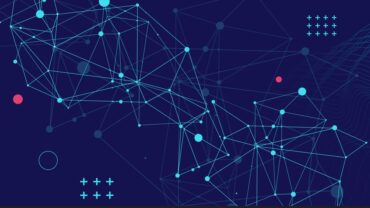
By championing security practices and policies that empower innovation, organizations can circumvent the need to play catch-up later.
In the era of AI, organizations find themselves at the intersection of innovation and security, where opportunities and challenges intertwine in a rapidly changing landscape. That sounds like AI wrote it! But the need for a balanced approach between security and innovation is very clear as we all explore the vast potential of artificial intelligence (AI).
There’s a lot of excitement surrounding AI-driven progress, and security considerations cannot take a backseat, exposing organizations to big risks. By focusing on implementing robust security measures early on, organizations can effectively mitigate potential threats and safeguard the integrity and privacy of their data. Whether it is the data assets, the loss prevention, or the infrastructure to run the AI platforms you are building, it is critical to build security into the design now.
The Impact of Data Exposure in the AI Era
Every day, large language models (LLMs) are becoming more democratized. This means even non-savvy users will be able to deploy their own models against data they have access to, opening Pandora’s box of data leakage. This puts a whole new emphasis on the insider threat. Not that they will necessarily use these for malicious purposes, but as each of our users seeks to increase their own velocity and productivity in the AI era, they will be experimenting with new ways to work. Imagine the impact of PHI, or IEPs, being exposed to models and what that could mean for privacy and security.
That’s why robust security measures must be in place to mitigate potential breaches and safeguard sensitive information. The new reality is that any interaction with datasets can result in a breach. Right from the outset, organizations need to consider “who owns the data?” in a way that they haven’t had before. And ask questions like: “Where does it live?” “And how long are we retaining it?” and most importantly, “Who should have access and for how long?” These considerations are vital to ensure data security and privacy are upheld effectively. Having answers to these questions will not just help protect the data but enable innovation.
See also: 10 Executives on Why and How GenAI is Here to Stay
GenAI: The Danger Zone
GenAI has democratized the use of AI and initiated a wave of applications that allow people to interact with it as simply as speaking to another person. However, it’s also made disentangling data assets, establishing controls, and implementing effective data management practices increasingly difficult. GenAI poses significant and unique security challenges, particularly concerning personal privacy. Also, GenAI models create new attack vectors that can manipulate the output of LLMs or chatbots to gain unauthorized access or bypass security guardrails.
Most current security approaches aren’t built to handle GenAI, which means we must plan for protective measures while still in the experimentation phase. Also, organizations must be mindful of sensitive data and make sure it isn’t available for use by applications that use GenAI without authorization. Failing to adopt a comprehensive security approach can lead to fairly significant compromises in data privacy.
Looking Ahead: Navigating the Future of Innovation and Security
Traditional security often feels like a roadblock, where requests are met with a resounding “no.” However, security practitioners aren’t opposed to progress; they’re realists who understand how vulnerable systems are. From data breaches to ransomware attacks, the dangers are palpable, making a cautious approach necessary to any new initiative.
Various factors cause the disconnect between security and business objectives. Sometimes, security professionals prioritize locking down systems without considering broader business strategies. Yet we must bridge this gap by understanding the importance of innovation while implementing the right protective systems, and truly, most security practitioners don’t want to get in the way. They just genuinely feel responsible for the protection of their organizations and want to make sure they are doing what is required to provide protection. Security is the good big brother of the organization, who truly wants to see you succeed and protect you on your journey to success.
Proactive collaboration between security and business objectives is key. By championing security practices and policies that empower innovation, organizations can circumvent the need to play catch-up later. This underscores the significance of securing data assets early on in the AI era so there is a fortress between information and the attacker—both within and outside the organization.






























